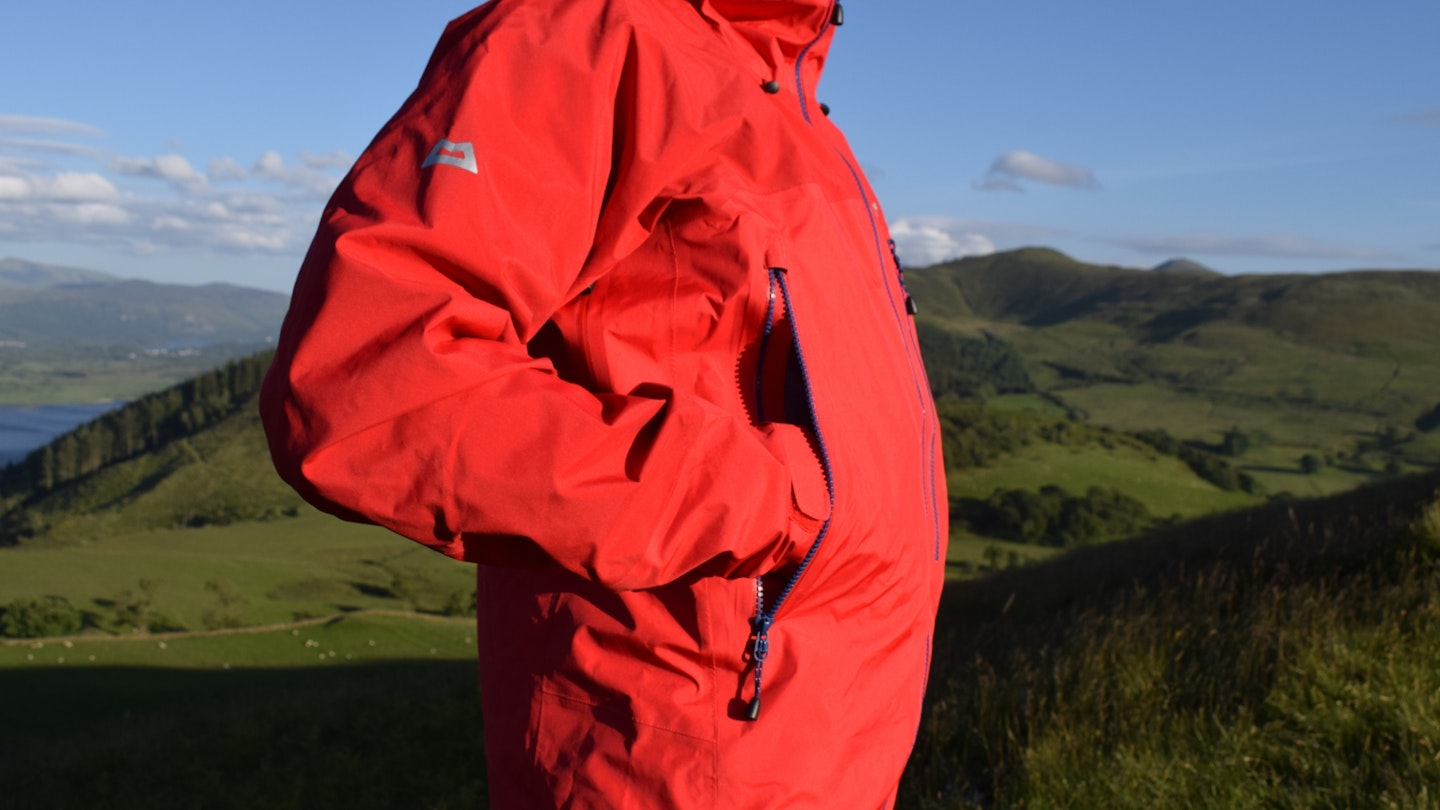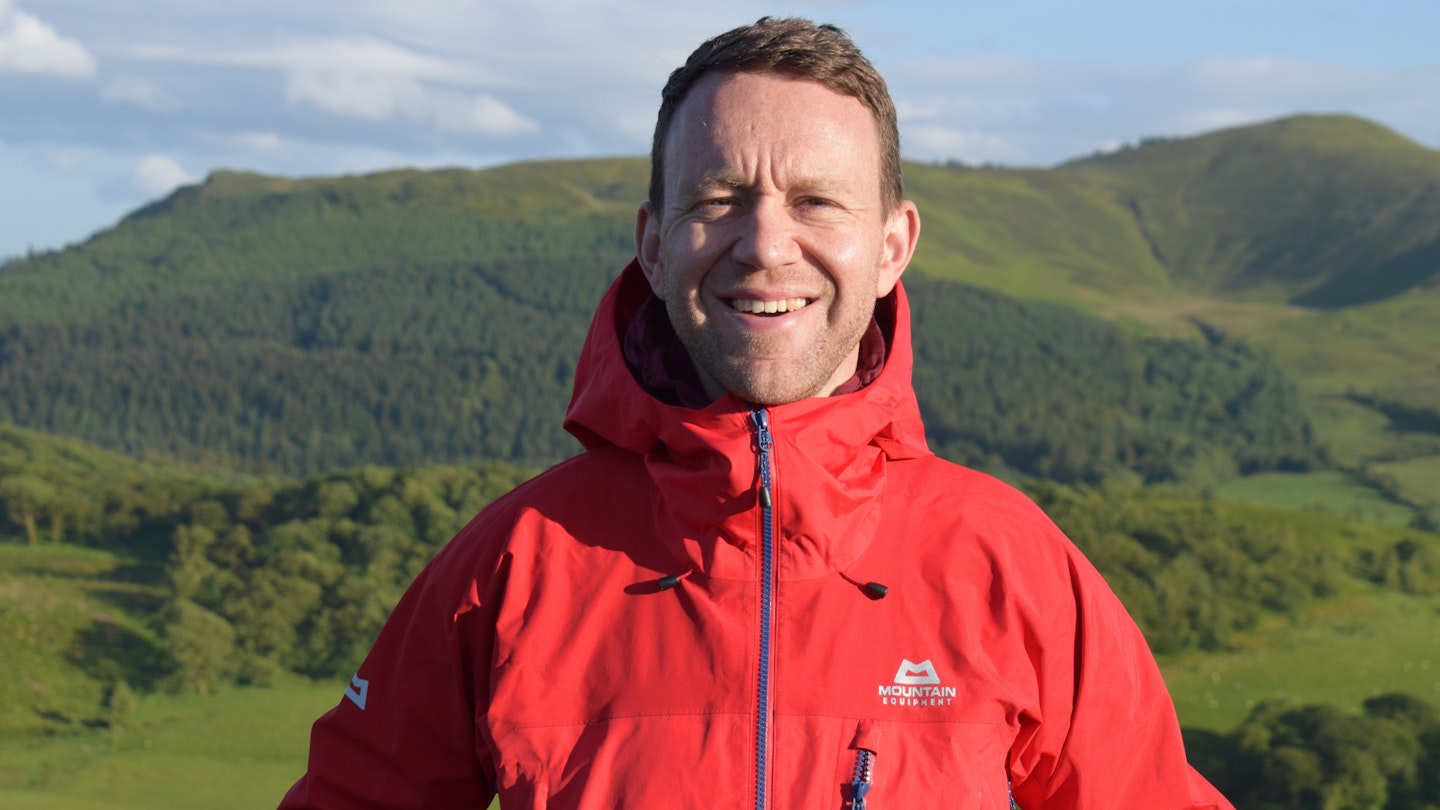You don’t name a jacket after the world’s fourth highest mountain unless you’re confident it’s worth its salt. Here, gear expert James Forrest tests out the Mountain Equipment Lhotse to see what it's made of...
But first, some background... Northern English brand Mountain Equipment has an impressive quartet of premium, technical Gore-Tex Pro hard shells in its range.
There's the Shivling, a lightweight jacket for fast and light escapades, and the Tupilak, a favourite for those who enjoy snowy winter adventures.
Then there's the Changabang, a heavier, no-expense-spared monster capable of taking on pretty much anything, anywhere, and the Lhotse, the brand’s best-selling Gore-Tex Pro jacket and a multi-award winner.
It’s the way the Lhotse hits the sweet spot between rugged protection, weight and comfort that has seen it become such a classic.
Indeed, it's a long-time Trail favourite, having won numerous awards over the years including the prestigious Gear of the Year accolade in 2021, and is due a spot on our list of the best winter waterproof jackets.
This high-spec hard shell is a great all-rounder and will please everyone from weekend warrior hikers through to elite mountaineers.
Pros
- Award-winning design
- Highly protective
- Lightweight
- Good freedom of movement
Cons
- Could be lighter
- No recycled materials
- Use of chemicals in DWR
| RRP: | £500/$749.95 |
| Men’s sizes: | S-XXL |
| Women’s sizes: | 8-16 (Mountain Equipment Manaslu) |
| Weight: | 463g (men’s small) |
| Fabric: | A mix of 80D and 40D Gore-Tex Pro 3-layer, using a 100% polyamide 6.6 face, ePTFE membrane with Gore Micro Grid backer |
It's not quite as light as some GTX Pro jackets, including Mountain Equipment’s own Shivling or something like Arc’teryx’s Beta AR, so if moving fast and free is your priority, these may suit better.
There’s also no mention of recycled materials in the jacket. However, the construction, components and design of this superb hard shell means it should see you through many years of adventure.
The women’s version of the Lhotse is called the Mountain Equipment Manaslu, another jacket with a superb reputation.
Waterproofing and construction
Like Rab’s Latok Mountain Gore-Tex Pro, the Lhotse boasts a dual-weight construction, with rugged 80-denier fabric for the shoulders and upper sleeves, and lighter 40-denier fabric for the main body and hood.
Shop this product
This provides the user with protection in high wear areas and enough freedom of movement to take on the peaks in whichever way they choose.
The shoulders, sleeves and the main body boast 3-layer construction.

The meat in this particularly protective sandwich is a Gore-Tex Pro membrane, which provides exceptional waterproofing and decent breathability, too.
A fluorine-based durable water repellent (DWR) treatment is the jacket’s outer forcefield, repelling the assaulting elements and causing water to bead and run off the fabric. The third layer in the 3-layer system is an inner solution-dyed backer.
According to Mountain Equipment the jacket comes with a hydrostatic head (HH) rating of 28,000mm, which is impressive, and plenty to keep you dry in even the worst weather.
That’s the fabrics taken care of then, but Mountain Equipment has also paid heed to other potential weaknesses by using storm guards on the pockets, deploying Aquaguard zippers and applying 13mm taped seams throughout. The brand even includes integrated zip slider garages.
Shop this product
Breathability and ventilation
The type of Gore-Tex Pro used in this jacket is the so-called “most breathable” version.
Mountain Equipment states a breathability rating of <6 RET (resistance to evaporating heat transfer).
For this kind of jacket, that's a high level of breathability, allowing water to escape and avoiding that boil-in-the-bag sensation you end up with in much cheaper waterproof jackets.
However, it’s worth bearing in mind that this is still a rugged mountaineering jacket designed more for the Alps and Scottish winter, rather than for people hauling themselves up Helvellyn in July, so don’t expect the same level of breathability as you’d get with a lightweight waterproof jacket.
Fortunately, to help keep things cool during exertion, there are underarm pit zips that can be opened up to dump heat. We also like the two-way front zipper, which allows for flexibility both when venting and when adding or removing layers.
Weight and packability

At 463g (men’s small), this is neither the heaviest nor the lightest Gore-Tex Pro jacket doing the rounds.
As mentioned, it sits in the middle of Mountain Equipment’s own lineup, heavier than the streamlined Shivling but lighter than the beastly Changabang.
So, it’s tempting to think of the Lhotse as the brand’s Goldilocks jacket, just right for most mountaineering or winter walking adventures.
The decision to opt for 40-denier fabric in the main body makes it more packable than its sibling, the Tupilak.
Shop this product
However, if you’ve got images of rolling this jacket up into a barely-there ball, you’ll be disappointed.
Winter jackets aren’t renowned for their packability and the Lhotse is no exception, though it’ll still fold up smaller than many Gore-Tex Pro jackets.
Fit and comfort
Mountain Equipment says the Lhotse features an 'alpine fit', which is the brand’s middle ground between its trim 'active fit' products and its roomier 'mountain fit'.
This means there’s space for layers underneath, but it’ll still look acceptable – stylish, even – in the pub after a day on the hill.
Arm movement is key when it comes to cold-season exploits. The Lhotse’s sleeves are articulated and pre-shaped for maximum freedom of movement, while the lighter main body fabric means that the jacket as a whole doesn’t feel as stiff as some.
Features: Hood, pockets and everything else

The consideration that goes into the hood can make or break a waterproof jacket.
The Mountain HC Hood used here is comfortable and unrestrictive, even when worn with a helmet, and can be adjusted from the rear or via two frontal adjusters.
The laminated and wired visor protects your field of vision in high winds or when wearing ski goggles or similar.
It’s an excellent hood, however, if climbing and mountaineering are your passions, you may be better served by Mountain Equipment’s Tupilak.
That's because the latter's hood features a lining that tightly grips your helmet, thus staying with it when you move your head from side to side, like when shaking your head at the slow progress of your climbing partner.

There’s ample space for bits and bobs in the three zippered front pockets, which include a chest pocket large enough for a topo map and two hand warmer pockets, placed high enough to still be accessible when wearing a harness.
Shop this product
On the inside is a single security pocket, a good shout for keeping your phone warm during freezing cold days, as nothing saps battery like Jack Frost.
Chunky zip pulls mean that accessing all of this when wearing winter gloves is straightforward.
Speaking of which, adjustable Velcro cuffs enable you to open things up when putting on gloves and then cinch everything in tight to keep the elements out.
Similarly, the bonded hem is also adjustable via an integrated drawcord that sits in a protective, laminated channel.
Sustainability
The Lhotse is manufactured in Ukraine and its production has been audited by the Fair Wear Foundation, of which Mountain Equipment is a member.
Fair Wear strives to create a world where the planet’s garment supply chain is “a source of safe, dignified and decently paid employment, and in which human rights are respected.”
In terms of its eco-credentials, Mountain Equipment points to the fact that the plastic packaging is 100% recycled and that the ‘swing ticket’ is printed on FSC approved paper.
However, beyond this, there’s no mention of recycled content in the garment itself. There’s also the fluorine-based DWR to consider, which is a toxic chemical that doesn’t break down easily.
Shop this product
Verdict
The Mountain Equipment Lhotse is an iconic, award-winning hard shell jacket that hits the sweet spot perfectly – but it’s pricey (£500/$749.95) and not the most eco-friendly.
About the author

James Forrest is a prolific peak bagger and long-distance walker who’s one of the most high-profile outdoor writers in the UK.
He writes regular features and route guides for Trail and has been one of our main gear testers for the last few years. James is based on the edge of the Lake District so when he isn’t off on his latest crazy adventure or challenge, he’s walking in his local fells.
James reviews every type of outdoor kit for Trail and is a real authority on everything you need for wild camping and packing light for a multi-day walk.





